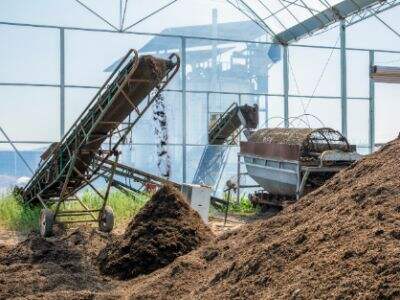What if you could improve the environment and welfare in your farm? With a bit of effort and some key ideas, you can transform your farm operation into a unique place of harmony and waste reduction. This can be achieved through a agriculture green circular system on your farm. We are going to help you learn how to convert your farm to this circular approach, providing you with success tips and tricks to improve your farm for everyone.
Turning Your Farm Into a Circular System
Transitioning your farm to a circular system may feel daunting, but with some effort and planning, it is possible! It starts with what you do now, but figuring out where you could improve. This could mean using less water, generating energy from the sun or finding new ways to recycle waste materials.
Once you identify where you want to improve, write down sustainability goals for your farm and a plan to achieve them. This plan should outline ways you can act — like installing solar panels, composting food, or employing natural repellents to keep pests away. You can slowly convert your farm to a system that benefits the environment and your farm's business by taking small steps.
Make the Most out of Resources and Reduce Waste
A green circular system organic fertilizer is all about conserving your resources, and minimizing waste. This may involve recycling, reusing water and composting organic materials. Doing these things on your farm makes the environment better and your farm more sustainable.
Crop rotation and intercropping are other words for this resource use palatability. And that helps keep the soil healthy, reduces the risk of pests and diseases, and adds diversity to the plants on your farm. You can grow more food and have healthier soil by mixing your crops and planting cover crops.
Another crucial practice for your circular system is composting. You can create rich soil by composting food scraps and leftover plants, which allows your plants to thrive. Compost can also act as a natural fertilizer, which translates to fewer chemicals needing to be used.
An Introduction To Establishing A Circular System
If you are transitioning to this environmental protection green circular system, it's better to take one step at a time and gradually implement sustainable practices to your farm. Start with simple alterations, such as using less plastic, conserving water or planting trees for shade.
As you familiarize yourself with these processes you could implement unto advanced concepts such as renewable energy systems, or constructing homes for the wildlife in your area on your farm. Starting small allows you to establish a solid foundation for a circular system that will support your farm in the long run.
How to Make Your Farm More Sustainable
Adopting a circular approach on your farm can transform it into a sustainable ecosystem that fosters biodiversity, conserves resources, and minimizes waste. This can be done through practices like planting trees among rows of crops and keeping your soil healthy.”
Companion planting trees and shrubs with your crops is a way to develop a more diverse and resilient ecosystem. This helps soil health, provides homes for wildlife and cleans the air.” This method makes your farm sustainable and good for the environment.
Preserving water is another critical aspect. Adopting water-saving techniques like collecting rainwater and using drip irrigation can help reduce your water usage and minimise pollution. This contributes to a safer water future and adds to the sustainability of your farm.
How to Farm More Sustainably, Successfully
Using circular concepts to make your farm more sustainable and efficient requires planning, commitment and ingenuity. Begin with establishing goals for your farm and planning accordingly. That could mean reducing waste, saving resources, and improving soil health.
Regenerative agriculture practices that improve your farm include not ploughing the soil over-much, planting cover-crops, rotating crops, etc. These practices can enhance soil health, contribute to cleaner air, and reduce chemical dependence. The way that you care for your soil is what builds a resilient and fertile farm that works for the environment and for your farm—all at once.

 EN
EN
 FR
FR
 DE
DE
 IT
IT
 AR
AR
 HR
HR
 DA
DA
 NL
NL
 FI
FI
 HI
HI
 JA
JA
 KO
KO
 PT
PT
 RU
RU
 ES
ES
 SV
SV
 TL
TL
 IW
IW
 ID
ID
 SR
SR
 UK
UK
 VI
VI
 HU
HU
 TH
TH
 TR
TR
 FA
FA
 AF
AF
 MS
MS
 GA
GA
 CY
CY
 AZ
AZ
 BN
BN
 KM
KM
 LO
LO
 LA
LA
 MR
MR
 NE
NE
 MY
MY
 KK
KK
 UZ
UZ
